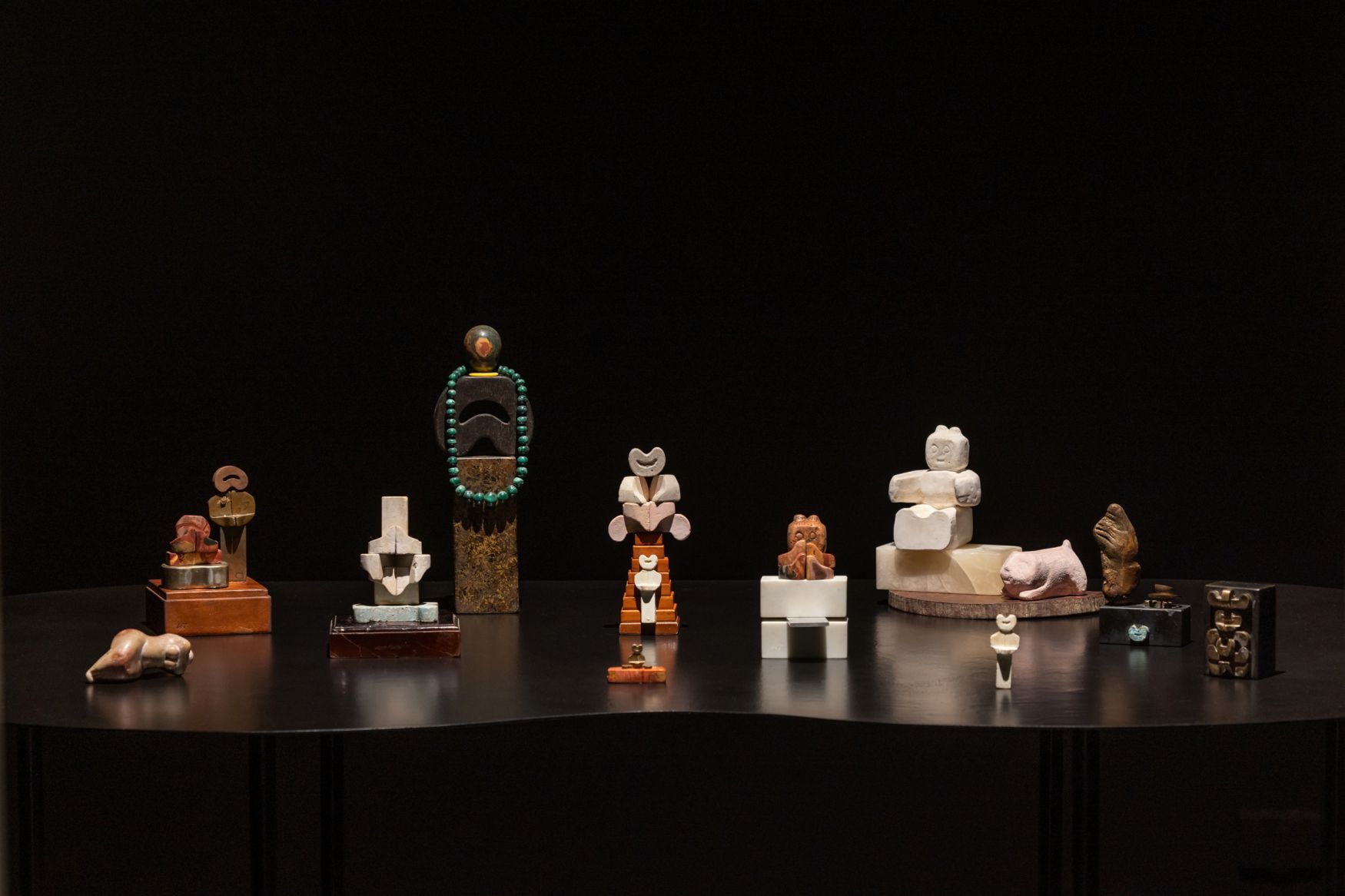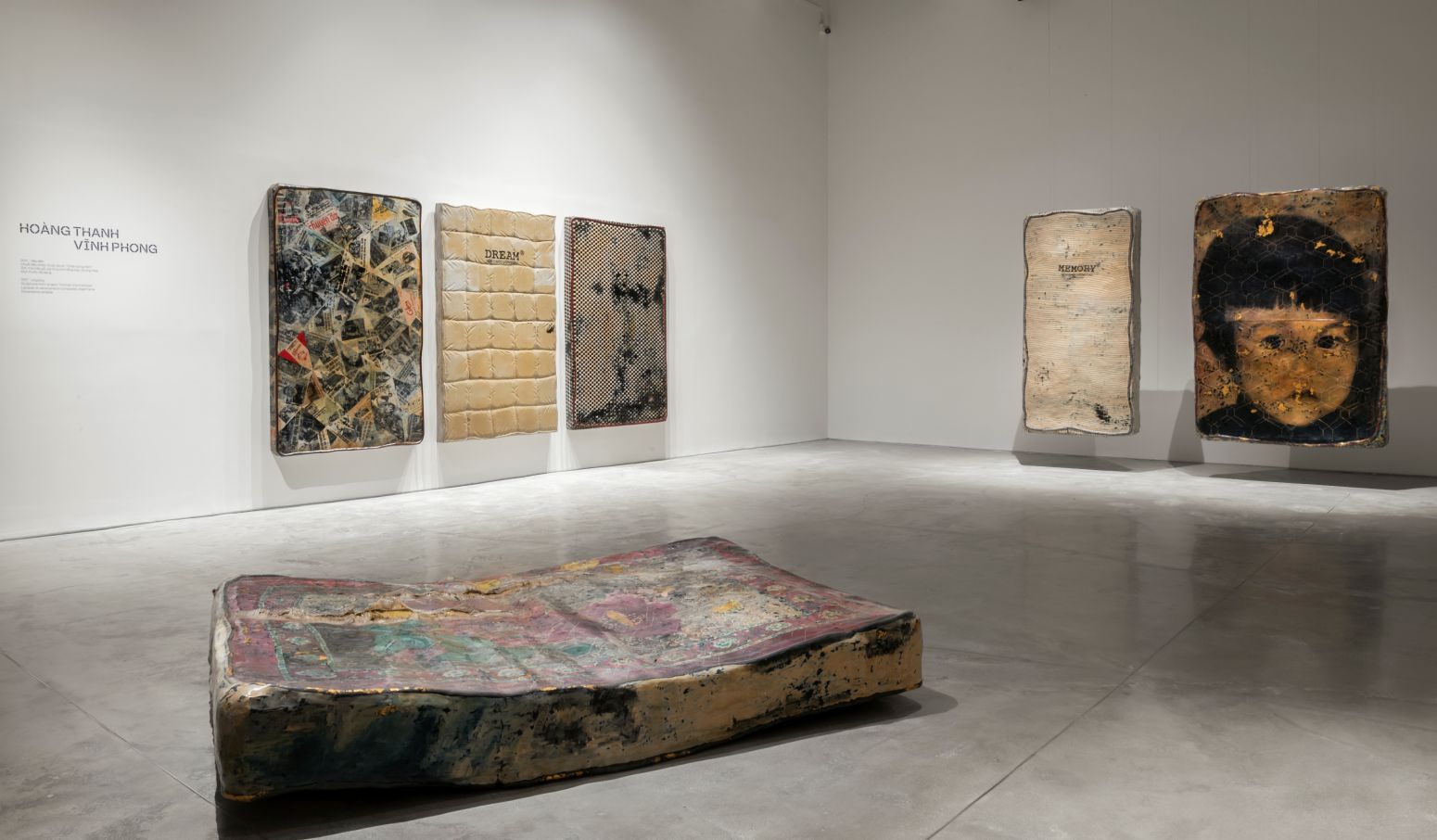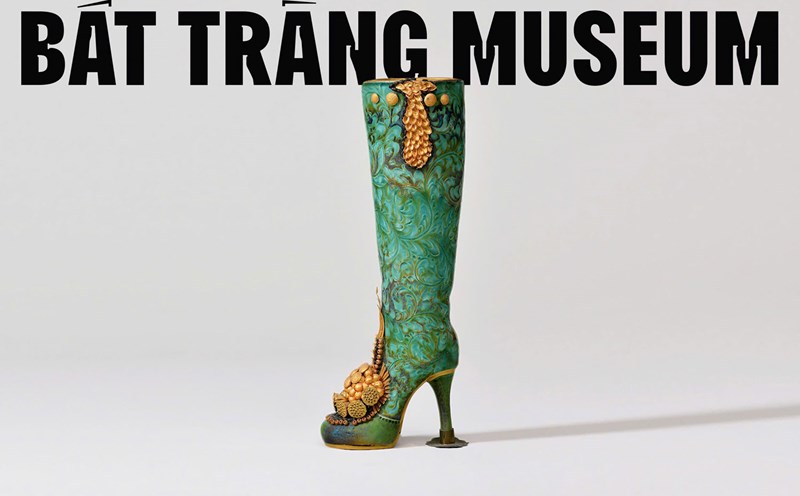Ariel Pham, can you tell readers what factors made you - as an executive director - orient The Outpost to operate "on the principles of a private museum" about art instead of another field?
- I studied economics before, with a background in finance. During my time working for a bank in the UK (2011 - 2014), I took care of a clientele whose needs were non-traditional investments: not real estate or stocks, but investments in art, documents, rare books or antiques. At the same time, I was also in charge of several transactions with auction houses Sotheby's, Christie's and got to know such an interesting market!
Returning to Vietnam in 2014, I continued to work in finance. However, a close friend was the owner of a contemporary art gallery, so I went to that space and collected to support my friend. After 7 years, when I had accumulated a number of works, by the end of 2021, I wanted to have a private space to display my collection and share it with everyone, instead of keeping them at home or in the gallery's warehouse.
People often ask me if I am a big art lover. I love art, but I am afraid of the hype about it. I just feel that the work I do has some meaning, affecting someone by giving them memories, experiences that may later lead them to other opportunities, meetings, knowledge. Maybe it is like me when I was a student in England, going to museums was almost my only entertainment activity. But when I go in and leave there, there are times when I am moved. The feeling of beauty, the comfort, even the desire to learn more knowledge also comes from those vibrations.
Visual impact or experience in space, I think would be a good start, since I have an art collection, let's see if when I display it, will others have the same experience as I have?

While there are many ways to share your collection with the public, such as a gallery or an art center, The Outpost operates as a small-scale private museum. How does The Outpost differ from these art spaces, or from a public art museum?
- Unlike a gallery or an art center, The Outpost owns its own collection, only buying and not selling works for commercial purposes. The exhibitions The Outpost introduces to the public, from The Outpost's collection or the collections of its partners, are selective and realize many of the artists' wishes and dreams that are difficult to meet in other spaces.
Normally, when people think of a museum, they immediately think of the public museum model - a place with a space to display artifacts regularly and rotate topics - with the ultimate purpose of educating the community, improving people's knowledge and cultural influence.
However, in today's era, museums are beginning to realize that they need to have more lively activities instead of just displaying collections passively and silently. To make visitors think of museums, they have a new perception, that it is a very "living" place, a place for gathering, community activities, serving both educational and entertainment needs, and people want to come back regularly, not just come once.
At The Outpost, we also have the basic activities of long-term exhibitions and displays, but at the same time, we also have a series of satellite activities that go with each exhibition. For example, there are tours with curators, afternoon tea with artists, workshops for participants to do manual activities, make their own products; or there are even special activities such as performing plays in the art space...
These derivative activities can create different dialogues so that viewers can communicate, interact and feel that they are actively participating directly instead of just watching passively, unable to ask questions about the work, unable to communicate with the author, unable to share their thoughts with people who have the same needs and desires...

Does Ariel Pham think the public's desire to return regularly will face barriers, when The Outpost is located far from the center and the ticket price is a bit high compared to public museum tickets?
- The name The Outpost also comes from the story of its peripheral location. The idea of a museum in the city center, where there are many visitors and many people, is our desire. However, to have a large enough exhibition space, suitable for contemporary art with standards such as high ceilings, bright walls, minimalism - it is very difficult to find in the center, or if there is, it is very expensive.
After a period of searching, we found that the Roman Plaza building had a floor that met the exhibition conditions, suitable for financial conditions, and we also accepted that it was located far from the center.
To have works displayed at The Outpost is very difficult, we have to invest a lot. Many works have the personality of the artist not often seen in regular exhibitions. The public comes to see, can experience the space, architecture, books, items in the souvenir coffee shop without just looking at the works. The public also takes home printed copies that are our intellectual investment, with the purpose of providing in-depth information (about the exhibition, works, artists) for educational purposes, improving each person's understanding of art.
The ticket price for each exhibition is not fixed but adjusted according to the investment level in it. And the ticket price offered by The Outpost is not enough to cover the costs we have invested. This is exactly “putting in even money, collecting small change”, my family always asks me: Are you sure you want to stick with this art model for a long time?
So how does The Outpost sustain its operations? After nearly 2 years of operation, is financing the most difficult issue?
- The Outpost's biggest source of revenue currently comes from renting out space and the team's intellectual consulting services. In addition to exhibition spaces, workshop spaces, and souvenir coffee shops, The Outpost also has other spaces such as function rooms and conference rooms for third parties to exploit.
The immediate goal is how The Outpost can generate revenue to support itself, continue to do programs, and acquire more works, without needing to make a profit. From the experience of those who have gone before, to go far and long, The Outpost knows that it needs to plan again, have restraint, and avoid spreading out spaces. And most importantly, it needs a council of investors, sponsors, and supporters to accompany it when it has proven its ability.
Currently, financial difficulties are in second place, the most worrying thing is the problem of human resources in the industry. To recruit the right positions from curators, art managers, art critics is extremely scarce. Always recruiting people from the wrong field and then training them on the spot. This consumes resources in terms of both time and money spent on human resources, but it also does not guarantee that the human resources will stick with the company for a long time. If there is strong finance but no good human resources, the story will fall into the black hole of spaces... Therefore, everything needs to have a joint effort, not just a single individual.

The common effort that The Outpost is aiming for, in a general vision, is to bring art to the public, on a macro level?
- From my personal observation, I see that the flourishing art spaces in Vietnam today make people think that Vietnamese art is developing very well, but in fact, they are divided into many levels. There are places where people use art for the purpose of creating images or doing business, while the places that want to use art as a way to improve people's knowledge or elevate culture can probably be counted on two hands. Even among collectors, many people use art as a way to polish themselves, as a privilege of the elite, to show off their image and class; those who are truly interested in sharing art with everyone are fewer.
Vietnamese modern art, especially contemporary art, inherits Western theories; along with galleries, respected people in the industry, and art practitioners themselves; talking about art with high-level, difficult-to-understand academic language has created a barrier that we have not been able to break down. The fear of most viewers is that they will watch without understanding anything about art, not daring to talk about it, and staying away from it.
Nowadays, many artists and curators are delving into the story of “deconstruction”, questioning the concepts, definitions, and theories of art that they previously accepted and took for granted, whether those theories are really suitable for their artistic practice, in the local and regional context or not?
Maybe I came from another industry, then stepped into art, so I have a more realistic and humble perspective. The feeling of vibration when stepping into a museum is a very dear experience in my youth, so what I experienced, I also want others to experience like me. The motivation to maintain The Outpost, deeply comes from that small thing. Starting with something small, meaningful to each individual on a micro level like that, will be more realistic in the short term. As for the macro story of raising people's knowledge, raising culture, and superstructure, is a story that comes later. After a lot of time...
Ariel Pham was born in 1989 in Nam Dinh. Graduated with a degree in Economics from the University of Nottingham (UK) in 2011. Returned to Vietnam in 2014, after working in the financial sector abroad. She is currently the Executive Director of The Outpost Art Center in Hanoi. The Outpost is a private art center operating on the principles of a small-scale contemporary museum, officially opening on November 29, 2022. After 2 years of operation with 7 major exhibitions, more than 60 satellite programs and programs connecting with different industry groups, The Outpost has attracted nearly 30,000 visitors and experiences.










